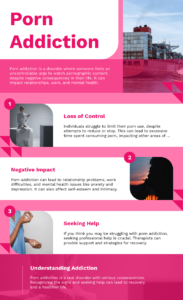Pornography Addiction.
Clouds come in many colors.
Sometimes as bright red as blood.
and Sometimes blue.
further Sometimes green.
Sometimes white like moringa flowers.
Right now, however, the clouds are grey.
It’s drizzling steadily.
A rain that brings sadness.
I don’t remember if it rained that morning, but for some reason, I was feeling very down. I was browsing the internet aimlessly. Suddenly, an article caught my eye. Who knew this piece of writing would change the course of my life?
The author is quite skilled; with real events, data, and some scientific analysis, he has woven an extraordinary story: Pornography Addiction is just as harmful as cocaine or heroin addiction! I read the entire article in one breath. It took some time to digest.
of course, Watching porn can cause as much harm to you as consuming cocaine, heroin, and other strong drugs! Not only that, but Pornography Addiction can also change the very structure of your brain!
But why? You didn’t eat or drink anything; you just sat in a corner of your house watching porn, yet why would you suffer the same harm as consuming cocaine or heroin? Why will your brain change?
To get the answer to this ‘why,’ we need to listen to some scientific explanations. I’m trying to explain as simply as possible.
A part of our brain is called the reward center. Its job is to give you a sense of pleasure through rewards, providing the motivation to live [1,2].
In simple terms, when I was young, I had an addiction to reading stories. My family used to say, “Do well in exams, and you’ll get storybooks.” After doing well in exams, immediately I was rewarded with storybooks for my good results. The reward center does exactly this. It motivates you for activities that advance your life, like eating well or working hard for something, and rewards you once the task is complete.

But how does the reward center reward us? What is the mechanism?
moreover, The reward center releases two chemicals called dopamine and oxytocin to give these rewards. These chemicals are produced in bulk when the reward center feels that something rewarding has happened. Once these two chemicals are produced, the game is over… all that’s left is happiness everywhere. Ananda, ananda, ananda [3].
But unfortunately, this ‘reward center’ is very easily hijacked [4].
Drugs like opium or cocaine excite the reward center without any hassle. Dopamine and oxytocin flood the brain, resulting in a feeling of ‘pain like happiness,’ as the poet says [5].
Porn, like drugs, can easily flood the brain with dopamine, giving its viewers intense pleasure for a moment [6]. Brain scans of porn addicts and drug addicts have shown that their brain structures are identical [7]. But the picture isn’t complete yet…
Dopamine flows through brain pulses, creating new pathways for receiving rewards. As a result, the viewer returns to the same activity that caused dopamine to be released the first time. This is why watching porn once makes you want to watch it repeatedly [8].
At that time, my baby teeth were just starting to fall out. I could barely lift the bat. A team was formed with a few kids like me. Although we had a ball, we didn’t have a bat. No one had the courage to ask their father for a bat.
Finally, someone managed to persuade their elder brother to carve a bat out of a palm tree branch. How happy we were with that bat! We played with it for a while, but soon it didn’t feel like playing with that palm bat anymore.
By then, we had grown a bit. A beautiful bat was made out of neem wood by carpenters. I can still see that blue bat in my mind! How many sixes did I hit with that bat?
After some time, we lost interest in playing with that bat too. We collected money and bought a pricey wooden cricket bat. The only purpose of telling you this long story is to make you understand that people can’t stay satisfied with something for long. The Creator has made humans this way.
The same thing happens with porn addiction. Suppose you watched some softcore porn, a certain amount of dopamine was released, and you felt pleasure. After watching several porn movies, even if the same amount of dopamine is released, you won’t feel the same pleasure as before. You won’t be satisfied with this porn movie anymore. You will need something new. Why does this happen?
Because when excessive dopamine is released, the brain becomes less sensitive to it. To protect itself from the effects of excessive dopamine, the brain discards some receptor nerves [9].
These receptor nerves’ job is to receive dopamine molecules and signal to the brain that a certain amount of dopamine has been received. When the number of receptor nerves decreases, there aren’t enough to receive dopamine, and the brain assumes the amount of dopamine is very low. This is why you get less pleasure from the same porn movie than before.
To feel the same pleasure as before, moreover you then turn to hardcore porn. This increases the level of dopamine release, and you get that intense pleasure again. Starting with softcore porn, so you gradually start watching more vile categories like gay porn, lesbian porn, and child porn to keep up with the dopamine level [10].
The same thing happens to drug addicts. An addiction that starts with cigarettes ends with cocaine and heroin [11,12].
furthermore, A very important part of our brain is the frontal lobe. What does this guy do?
as I have noted When a beautiful woman walks down the lab corridor, the dreaminess that covers your eyes is due to this frontal lobe. It plays a crucial role in our ability to express thoughts, make decisions, solve problems, and, most importantly, control our personality [13].
Pornography Addiction still like drugs, overeating, internet addiction, and porn cause severe damage to this frontal lobe [14]. The terrifying thing is that the more a person watches porn, the more their brain gets damaged, and recovering from this damage becomes difficult [15].
in conclusion, I hope it is clear that even though it seems harmless at first glance, definitely porn movies can cause immense damage to your brain.

Reference
[1] Hilton, D. L., and Watts, C. (2011). Pornography Addiction: A Neuroscience Perspective. Surgical Neurology International, 2: 19; (http://www.ncbi.nlm.nih.gov/pmc/articles/PMC3050060/) Bostwick, J. M. and Bucci, J. E. (2008). Internet Sex Addiction Treated with Naltrexone. Mayo Clinic Proceedings 83, 2: 226–230; Nestler, E. J. (2005). Is There a Common Molecular Pathway for Addiction? Nature Neuroscience 9, 11: 1445–1449; Leshner, A. (1997). Addiction Is a Brain Disease and It Matters. Science 278: 45–7.
[2] Bostwick, J. M. and Bucci, J. E. (2008). Internet Pornography AddictionTreated with Naltrexone. Mayo Clinic Proceedings 83, 2: 226–230; Balfour, M. E., Yu, L., and Coolen, L. M. (2004). Sexual Behavior and Sex-Associated Environmental Cues Activate the Mesolimbic System in Male Rats. Neuropsychopharmacology 29, 4:718–730; Leshner, A. (1997). Addiction Is a Brain Disease and It Matters. Science 278: 45–7.
[3] Hedges, V. L., Chakravarty, S., Nestler, E. J., and Meisel, R. L. (2009). DeltaFosB Overexpression in the Nucleus Accumbens Enhances Sexual Reward in Female Syrian Hamsters. Genes Brain and Behavior 8, 4: 442–449; Bostwick, J. M. and Bucci, J. E. (2008). Internet Sex Addiction Treated with Naltrexone. Mayo Clinic Proceedings 83, 2: 226–230; Doidge, N. (2007).
The Brain That Changes Itself. New York: Penguin Books, 108; Mick, T. M. and Hollander, E. (2006). Impulsive-Compulsive Sexual Behavior. CNS Spectrums, 11(12):944-955; Nestler, E. J. (2005). Is There a Common Molecular Pathway for Addiction? Nature Neuroscience 9, 11: 1445–1449; Leshner, A. (1997). Addiction Is a Brain Disease and It Matters. Science 278: 45–7.
[4] Doidge, N. (2007). The Brain That Changes Itself. New York: Penguin Books, 106; Kauer, J. A., and Malenka, J. C. (2007). Synaptic Plasticity and Addiction. Nature Reviews Neuroscience 8: 844–858; Mick, T. M. and Hollander, E. (2006). Impulsive-Compulsive Sexual Behavior. CNS Spectrums, 11(12):944-955; Nestler, E. J. (2005). Is There a Common Molecular Pathway for Addiction? Nature Neuroscience 9, 11: 1445–1449; Leshner, A. (1997). Pornography Addiction Is a Brain Disease and It Matters. Science 278: 45–7.
[5] Doidge, N. (2007). The Brain That Changes Itself. New York: Penguin Books, 106; Nestler, E. J. (2005). Is There a Common Molecular Pathway for Addiction? Nature Neuroscience 9, 11: 1445–1449.
[6] Doidge, N. (2007). The Brain That Changes Itself. New York: Penguin Books, 106; Nestler, E. J. (2005). Is There a Common Molecular Pathway for Addiction? Nature Neuroscience 9, 11: 1445–1449.
[7] https://www.youtube.com/watch?v=OtQBxsf1st8
[8] Hilton, D. L. (2013). Pornography Addiction—A Supranormal Stimulus Considered in the Context of Neuroplasticity. Socioaffective Neuroscience & Psychology 3:20767; Pitchers, K. K., Vialou, V., Nestler, E. J., Laviolette, S. R., Lehman, M. N., and Coolen, L. M. (2013). Natural and Drug Rewards Act on Common Neural Plasticity Mechanisms with DeltaFosB as a Key Mediator. Journal of Neuroscience 33, 8: 3434-3442; Hedges, V. L., Chakravarty, S., Nestler, E. J., and Meisel, R. L. (2009).
DeltaFosB Overexpression in the Nucleus Accumbens Enhances Sexual Reward in Female Syrian Hamsters. Genes Brain and Behavior 8, 4: 442–449; Hilton, D. L., and Watts, C. (2011). Pornography Addiction: A Neuroscience Perspective. Surgical Neurology International, 2: 19; (http://www.ncbi.nlm.nih.gov/pmc/articles/PMC3050060/)
Miner, M. H., Raymond, N., Mueller, B. A., Lloyd, M., Lim, K. O. (2009). Preliminary Investigation of the Impulsive and Neuroanatomical Characteristics of Compulsive Sexual Behavior. Psychiatry Research 174: 146–51; Angres, D. H. and Bettinardi-Angres, K. (2008). The Disease of Addiction: Origins, Treatment, and Recovery. Disease-a-Month 54: 696–721; Doidge, N. (2007). The Brain That Changes Itself. New York: Penguin Books, 107
[9] Hilton, D. L., and Watts, C. (2011). Pornography Addiction: A Neuroscience Perspective. Surgical Neurology International, 2: 19; (http://www.ncbi.nlm.nih.gov/pmc/articles/PMC3050060/) Angres, D. H. and Bettinardi-Angres, K. (2008). The Disease of Addiction: Origins, Treatment, and Recovery. Disease-a-Month 54: 696–721.
[10] Angres, D. H. and Bettinardi-Angres, K. (2008). The Disease of Addiction: Origins, Treatment, and Recovery. Disease-a-Month 54: 696–721; Zillmann, D. (2000). Influence of Unrestrained Access to Erotica on Adolescents’ and Young Adults’ Dispositions Toward Sexuality. Journal of Adolescent Health 27, 2: 41–44.
[11] http://fightthenewdrug.org/how-porn-affects-the-brain-like-a-drug/#sthash.ROBODp8y.dpbs
[12] https://www.yourbrainonporn.com/brain-scan-studies-porn-users
[13] https://www.healthline.com/human-body-maps/frontal-lobe/male
[14] Yuan, K., Quin, W., Lui, Y., and Tian, J. (2011). Internet Addiction: Neuroimaging Findings. Communicative & Integrative Biology 4, 6: 637–639; Zhou, Y., Lin, F., Du, Y., Qin, L., Zhao, Z., Xu, J., et al. (2011).
Gray Matter Abnormalities in Internet Addiction: A Voxel-Based Morphometry Study. European Journal of Radiology 79, 1: 92–95; Miner, M. H., Raymond, N., Mueller, B. A., Lloyd, M., Lim, K. O. (2009). Preliminary Investigation of the Impulsive and Neuroanatomical Characteristics of Compulsive Sexual Behavior. Psychiatry Research 174: 146–51; Schiffer, B., Peschel, T., Paul, T., Gizewshi, E., Forshing, M., Leygraf, N., et al. (2007).
Structural Brain Abnormalities in the Frontostriatal System and Cerebellum in Pedophilia. Journal of Psychiatric Research 41, 9: 754–762; Pannacciulli, N., Del Parigi, A., Chen, K., Le, D. S. N. T., Reiman, R. M., and Tataranni, P. A. (2006). Brain Abnormalities in Human Obesity: A Voxel-Based Morphometry Study. NeuroImage 31, 4: 1419–1425.
[15] Angres, D. H. and Bettinardi-Angres, K. (2008). The Disease of Addiction: Origins, Treatment, and Recovery. Disease-a-Month 54: 696–721.






